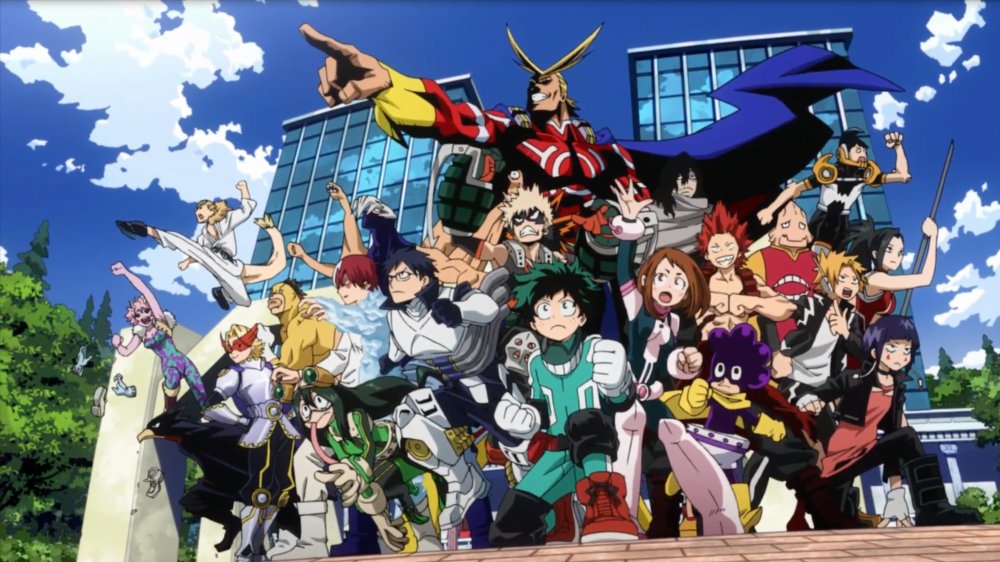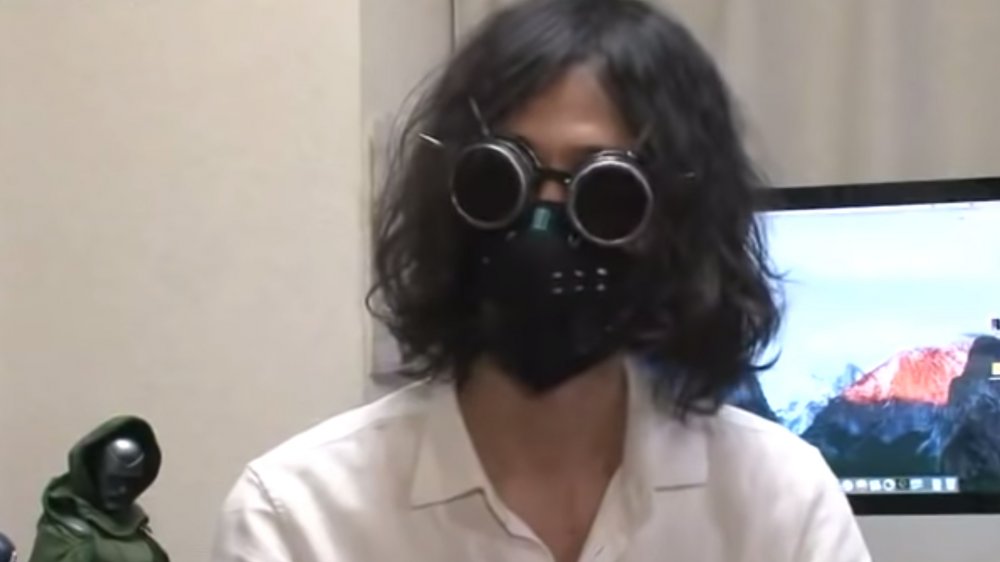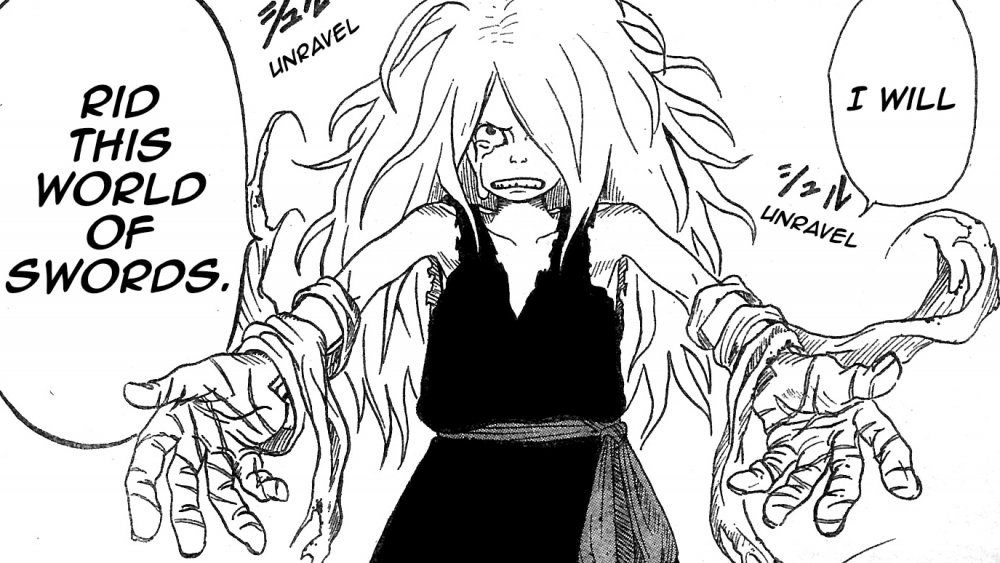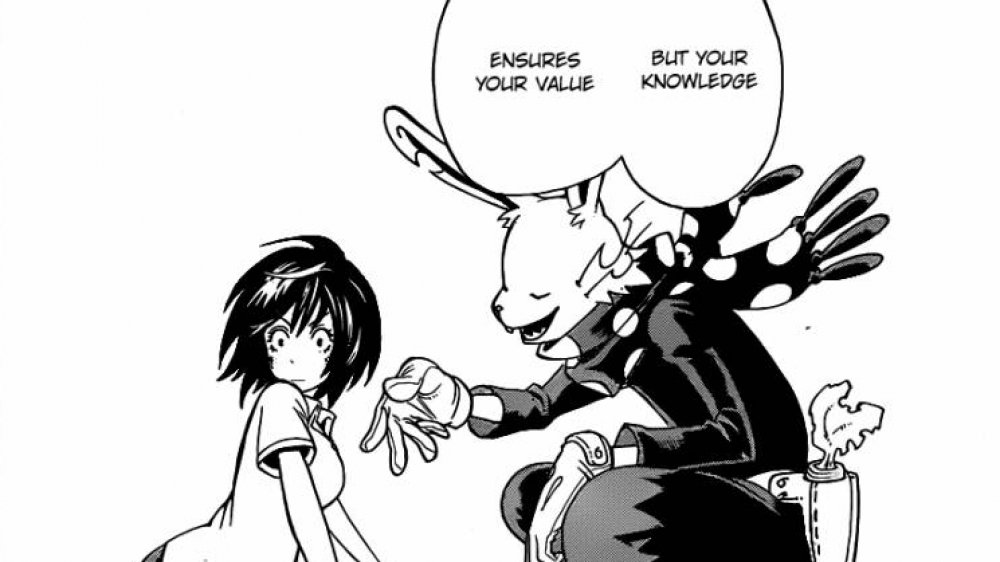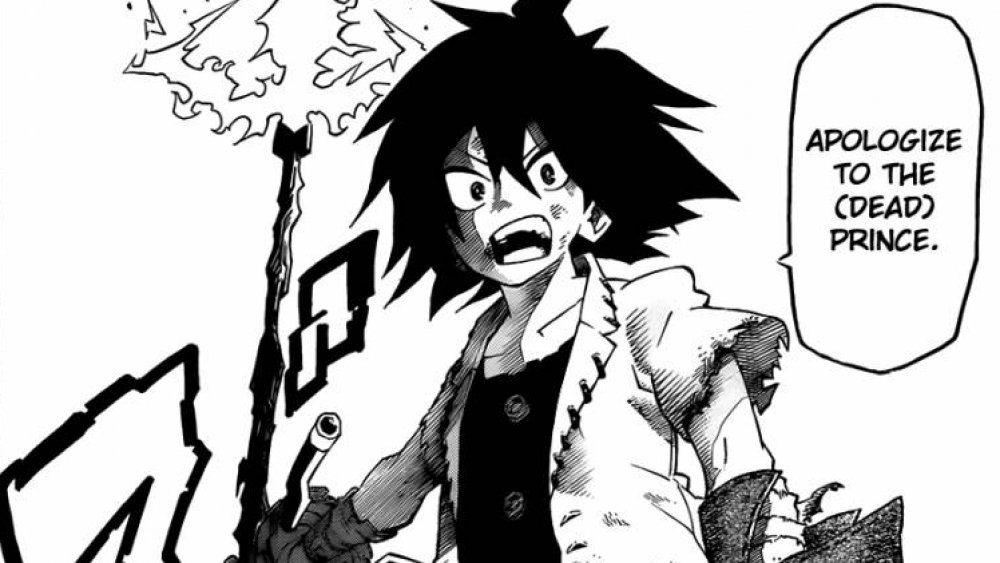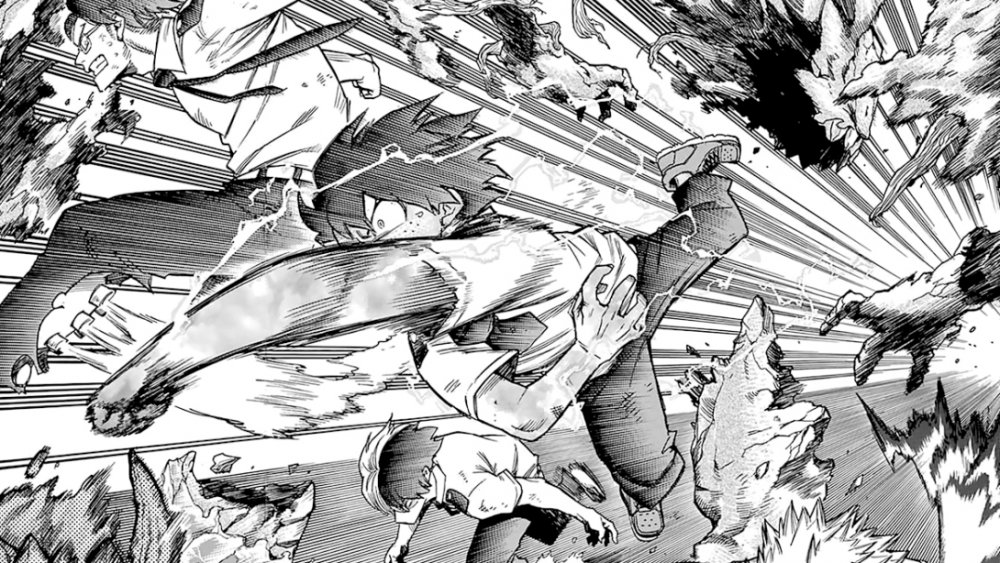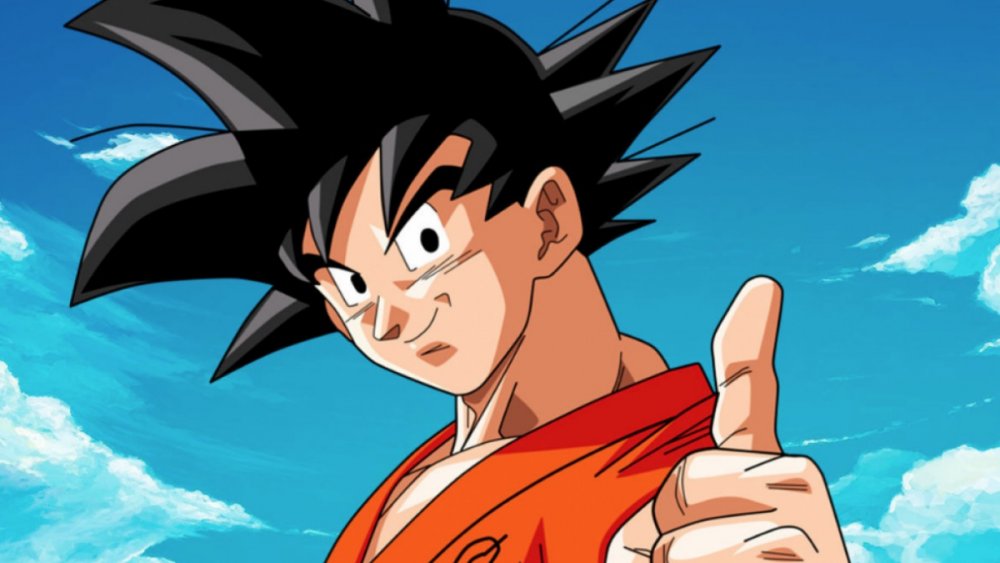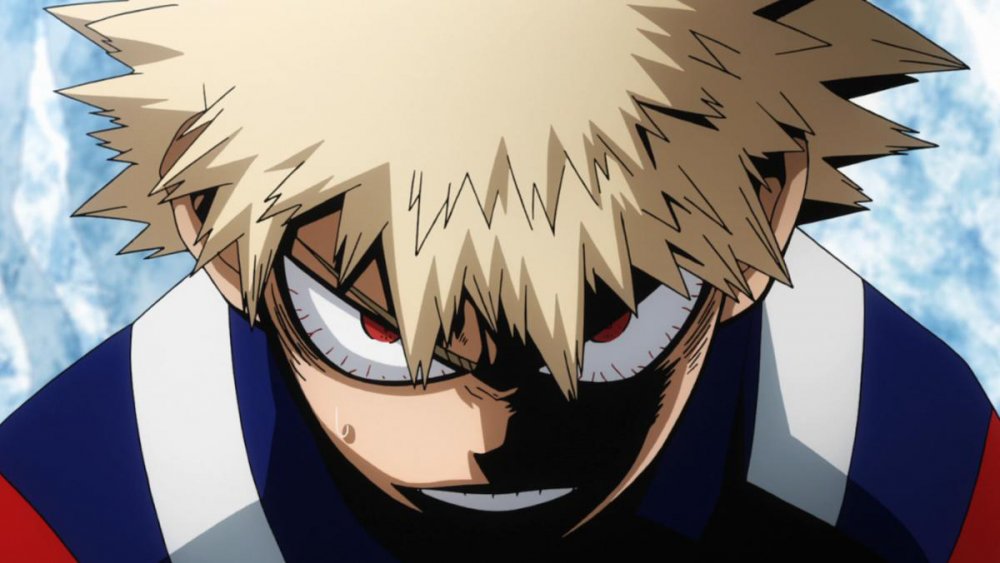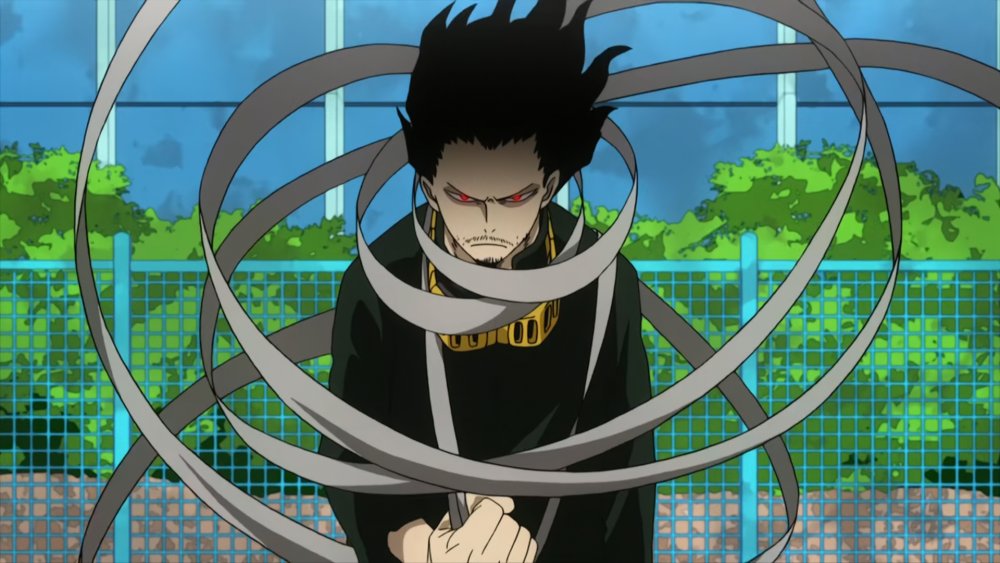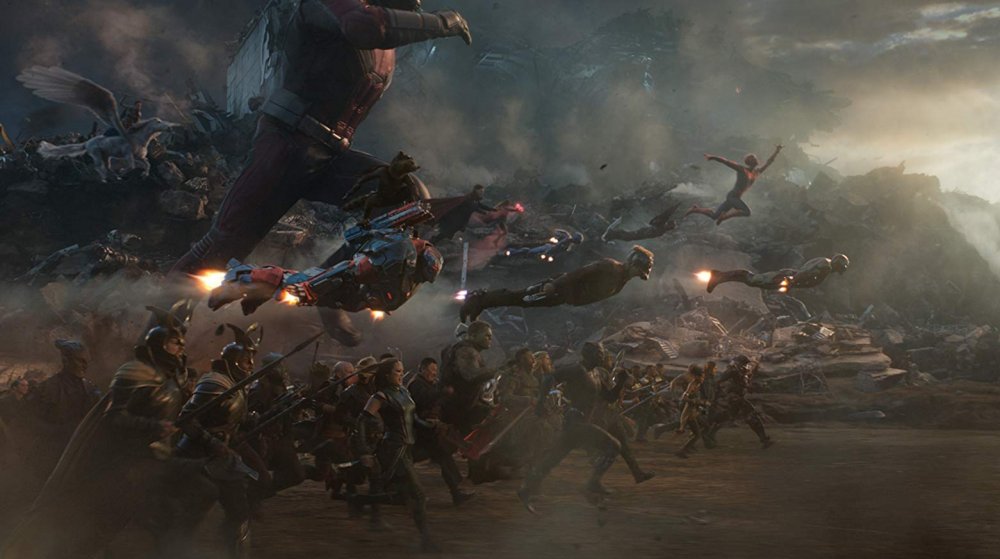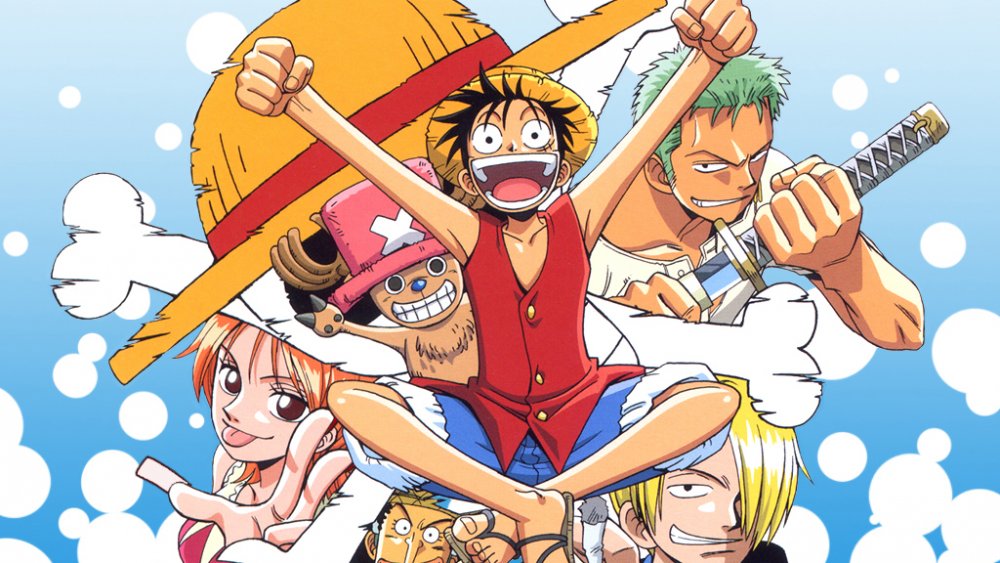The Untold Truth Of Kohei Horikoshi
Ever since its serialization in 2014, the manga My Hero Academia has been a sensation in Japan. As the series continued, it received an anime adaptation in 2016, with an English dub finally arriving on the Adult Swim airwaves in May of 2018. Since it first became available to watch on Hulu and Crunchyroll, My Hero Academia has become the latest huge anime phenomenon to sweep western markets. It makes sense that a series devoted to super-powered teenagers trying to figure out life and their powers at the same time would have the potential for worldwide appeal. And while some fans may have watched every episode of the anime or have read each volume of the manga, they still may not know the man behind the series.
Kohei Horikoshi created one of the most well-known manga series in recent years, but few people likely know much about the creator himself. Being a private person to the point of wearing a face mask during video interviews, Horikoshi does not give many interviews or public discussions, especially not many that are translated into English. For those looking to dive further into the All Might of anime, here is the untold truth of Kohei Horikoshi.
Early Life
Kohei Horikoshi has always had a fascination with the fine arts. In a 2018 interview at San Diego Comic-Con, Horikoshi said that he had begun drawing as a small child. His parents supported Horikoshi's artistic abilities, offering encouragement whenever he would show them one of his finished drawings. When it came time to decide where he would go to school, Horikoshi decided to pursue design at the Nagoya University of Arts. However, his goal was ultimately to become a manga artist.
While at university, Horikoshi found that school was not helping him realize his dream job, and practiced his craft outside of the classroom. In addition to drawing on his own time, he submitted his work to different publishers and was recognized with an Honorable Mention for the Tezuka Prize, an award given by the publisher Shueisha, the company responsible for publishing many popular magazines including Shonen Jump. After graduating from the Nagoya University of Arts, Horikoshi did freelance work until landing his first one-shot manga at Shonen Jump.
Getting started with Shonen Jump
For most manga artists aspiring to create an action-adventure series, their dream is to have their work published in Shonen Jump. First published in July of 1968, it's the best-selling manga magazine of all time. By the time the magazine celebrated its 50th anniversary in 2018, it was reported that over 7.5 billion copies had been put into circulation over the course of its lifetime.
Kohei Horikoshi didn't just dream of being a manga artist; he wanted to make it big. In an interview with Team Jump in 2016, he said, "Getting into Shonen Jump has always been a dream of mine." It turns out that the extra work Horikoshi was doing in college earned him more than just an Honorable Mention. It earned him a spot in a 2007 seasonal edition of Shonen Jump, where they published amateur manga artists. Horikoshi explained how this happened in an interview with Anime News Network saying, "In college, Jump had a lot of submission contests. I submitted one back then and won...I think I got lucky."
This statement is most likely referring to Tenko, Horikoshi's 2007 one-shot manga. This stroke of good fortune would lead to more than just a one-off story. Eventually, Horikoshi went on to create his own serialized manga.
Oumagadoki Zoo
Horikoshi's first manga series, Oumagadoki Zoo, began in 2010 and ran in Weekly Shonen Jump until 2011. In total, the series had a relatively short run with only five volumes and 40 chapters.
Oumagadoki Zoo follows Hana Aoi, a teenage girl who is teased by her peers for her clumsy nature. After she comes across a flyer advertising a part-time job at a zoo, Hana decides to inquire. Once Hana arrives at the eponymous Oumagadoki Zoo, she finds the zoo's director, Shiina, has been cursed, and his body is now half-human and half-rabbit. In order for Shiina to get his human body back, he must properly care for the zoo's animals and make the zoo the best in the world, thus proving his love for animals. The problem? Shiina finds this task to be too much of a bore. Luckily for him, Hana happens to be an animal lover.
Though Oumagadoki Zoo is one of Horikoshi's lesser-known works, the series helped the artist dip his feet into manga creation. Additionally, Oumagadoki Zoo has a few interesting minor character designs that later made their way into My Hero Academia.
Barrage
Sensei no Baruji, or Barrage, is Horikoshi's second manga series that dabbles in the realm of fantasy and adventure. It initially began as a one-shot manga in Jump NEXT! in 2011, and was then serialized a year later in Weekly Shonen Jump. Similar to Horikoshi's first series Oumagadoki Zoo, Barrage had a short run with only two volumes and 16 chapters total.
The story follows Astro, a young man who lives in the slums of the planet Industria with his adopted siblings. Following an alien attack, Astro is fired from his job, leaving him unable to provide for his family. Following this unfavorable turn of events, Astro meets Prince Barrage of Industria, who just so happens to look exactly like Astro. Selfishly wanting to run away from his family, the prince wants Astro to trade places with him. Astro agrees and assumes the role of the prince of Industria and is given the royal weapon called the Org. Tasked with protecting the land, Astro traverses the world with the Org and Tiamat, the captain of the royal guard.
Though Barrage was seemingly canceled due to poor readership, the series was still given an American release by Viz Media. While Astro's adventures may have been cut short, at least English readers were given a chance to experience Barrage's story.
My Hero Academia
Without a doubt, My Hero Academia is Horikoshi's most famous work. It began as a one-shot manga, and after following the completion of Barrage, Horikoshi decided to turn the concept into a full-fledged series. My Hero Academia follows Izuku Midoriya, also known as Deku, a boy who is born without superpowers in a world where 80% of the population has them. Deku gains the respect of Japan's top Hero, All Might, who also happens to be his idol. All Might passes his power on to Deku so he can begin training at a prestigious hero academy.
First serialized in Weekly Shonen Jump in 2014, the original manga currently has 25 volumes and multiple spinoff series including My Hero Academia Smash!!, My Hero Academia: Vigilantes, My Hero Academia: Team Up Mission, and My Hero Academia: Two Heroes. The series has also been adapted into an anime with four seasons and two feature-length films — My Hero Academia: Two Heroes and its sequel, My Hero Academia: Heroes Rising.
The popularity of My Hero Academia has been tremendous. As of December of 2019, the manga has sold over 26 million copies while earning multiple spots on the New York Times January 2020 Best Sellers List for Graphic Books and Manga. It also won the Best Manga award at the 2019 Harvey Awards.
Horikoshi based All Might on Goku
In the world of My Hero Academia, All Might is regarded as the invincible Superman-like hero of the universe. He is known as the "Symbol of Peace" and is hailed as Japan's greatest superhero. All Might is seemingly indestructible and loved by all, and after watching him excel in battle, it's pretty easy to see why he has so many adoring fans.
So how exactly did Horikoshi come up with All Might? During San Diego Comic-Con 2018, Horikoshi was part of a Shonen Jump panel where fans could ask questions about My Hero Academia. One person in the crowd asked about the character All Might and if he was based on anyone from Horikoshi's life. In response, Horikoshi said, "No, not anyone in real life. I based him on Goku in Dragon Ball." Considering Goku is the Earth's best defense against all who wish to destroy the planet, absorb its inhabitants, or just cause mayhem, it makes sense that All Might is based on one of the contenders for the title of strongest anime character of all time.
Bakugo's popularity came as a surprise
Katsuki Bakugo, also called Kacchan, is the anti-hero in my My Hero Academia. Unlike Deku, Bakugo starts off as an arrogant bully who is unafraid to speak his mind, even if that means alienating those around him. Despite his vast array of seemingly unfavorable characteristics, Bakugo is actually quite popular among fans.
In an interview with Anime News Network, Horikoshi was asked the popularity of any of his characters surprised him. "Bakugo has been a bit of a surprise," he admitted. "I assumed everyone would hate him, but it's been the opposite. In the character questionnaires we do, Bakugo comes in #1 most popular. Bakugo has always been the bully, and he ends up going to school with Deku. So I had them in a big fight pretty early on, but through that fight you were able to see Bakugo's humanity, that he was just a short-tempered kid."
For many, Bakugo's flaws can be excused because of his relatability and growth. Throughout the series, he experiences defeat and even matures as a person. However, for Horikoshi, Bakugo isn't someone he would want any contact with in real life. In an interview at Jump Festa 2016, when asked if he would hang out with Bakugo, Horikoshi asserted, "No way! I wouldn't want to be anywhere near him."
Coming up with Hero Quirks
In My Hero Academia, a Quirk, is a unique ability that acts as a sort of superpower for a specific individual. Roughly 80% of the population has a Quirk, so Horikoshi has his job cut out for him coming up with unique and exciting character quirks without feeling forced or uninspired. So how exactly does he come up with all of the Quirks?
In an interview with Comicbook.com, Horikoshi explained that initially Quirks were sometimes designed out of necessity. For instance, the story would need to progress or characters would need to fight with each other, so a certain Quirk would be employed to help drive the narrative. But as the series moved forward, the conceptualization of Quirks drew inspiration from everyday objects. Horikoshi elaborates, "For example, with Gran Torino, I came up with his Quirk when I was taking a shower. I looked at the showerhead and was like, 'Oh, that would be cool... for something to come out of his feet.' Like have propellant coming out of them. So, that is how his Quirk was inspired."
Horikoshi is a big fan of American superheroes
For those familiar with Horikoshi's library of work, it's probably not much of a surprise that he's a big fan of American superheroes. Horikoshi's affinity for Marvel and American popular culture in general is especially apparent, considering the many nods to American comics included in My Hero Academia. In an interview with Comicbook.com, when Horikoshi was asked if he drew specific inspiration from Western comics, he responded, "Yeah, I literally have a Japanese translated version of a U.S. superhero title in my left hand, and I'm drawing with my right."
Though Horikoshi loves a wide array of American superheroes, he has a particular fondness for Marvel's Spider-Man. In an interview with Anime News Network during the 2018 San Diego Comic-Con, Horikoshi said that he was after an Iron Spider-Man figure on display at the convention's Sideshow booth. Additionally, during the Shonen Jump panel, Horikoshi mentioned that he had previously purchased a life-sized bust of Carnage from the Sideshow Collectibles. Additionally, in an interview with Comicbook.com, one of the original editors of the manga said, "I heard that [Horikoshi] really likes Sam Raimi's Spider-Man."
Horikoshi's love for Marvel's web-slinging hero is even reflected in the protagonist of My Hero Academia. Both Deku and Peter Parker are teenagers who are dealing with mastering newfound powers while also trying to make judgment calls about how to use those powers for good.
One Piece has been a huge inspiration
Though Horikoshi has drawn inspiration from various manga over the years, One Piece has had a particularly massive impact on the creator and his leap into the world of manga creation. In August 2018, Horikoshi and Eiichiro Oda, the manga artist behind One Piece, conducted an interview together discussing both creators' works. The discussion begins with a description of the first interaction the two had with each other.
When Horikoshi was in high school, his fan art was published in One Piece Volume 23's Illustration Corner within the Usopp Gallery Pirates segment. Horikoshi recalled, "I remember I was a high school student when I turned the page and saw that my art had been published in a tiny corner. I started shaking, called out 'Mom!!' and went to go show her."
The interview ends with some friendly competition, but ultimately with Horikoshi thanking his idol and saying, "I'll do my best to surpass One Piece!!" This is no small feat, as One Piece is the best-selling manga of all time, having passed 460 million copies sold as of December 2019. But if anyone is up to the task, it might just be Kohei Horikoshi.
